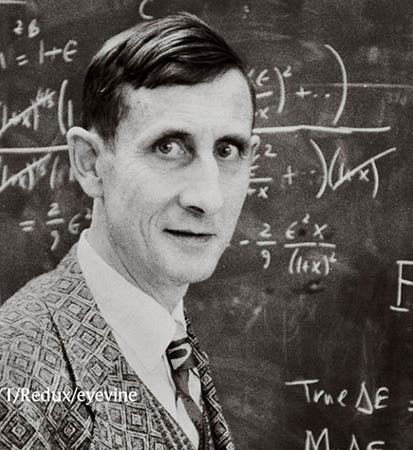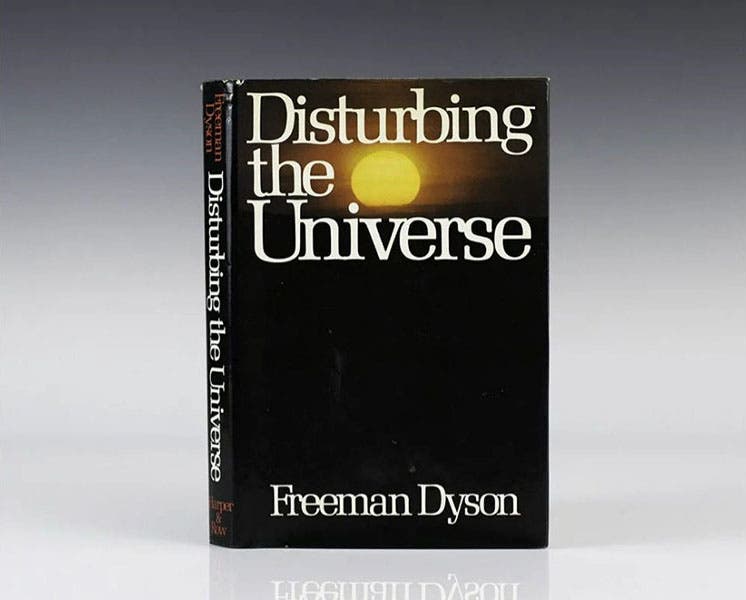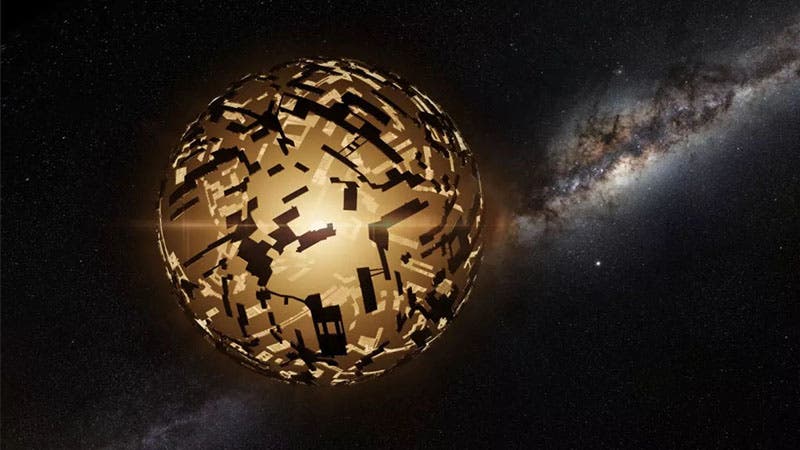Scientist of the Day - Freeman Dyson
Freeman Dyson, a British-American physicist, was born Dec. 15, 1923. Dyson made a number of important contributions to quantum theory, especially to the branch known as quantum electrodynamics, or QED. Richard Feynman is the best-known figure in this field, but when he first proposed his Feynman diagrams in 1948, other physicists did not see any purpose in Feynman’s unfamiliar technique, and it was Dyson who demonstrated the value of Feynman’s approach and his diagrams, and their compatibility with the other QED theory of the time, that of Julian Schwinger. Dyson was so good at it that for a time the diagrams were called Feynman-Dyson diagrams, and sometimes just Dyson graphs. However, explaining Feynman diagrams is far beyond our skill set, so we will just show you here Feynman’s Dodge van, which he decorated with Feynman diagrams, making his vehicle quite easy to spot as he tooled around Pasadena (second image, below) We showed a different photo of this photogenic vehicle in our post on Feynman four years ago.
Fortunately for the non-physicists among us, Dyson had many other interests besides QED, interests that are quite comprehensible to laypersons, such his concern with the future of the human race, and with the possible existence of civilizations other than our own in our Galaxy. He published several books for the educated public that are just brimming with thoughtful musings about how civilizations might and should advance, how we might detect them from here, and what might be the most economical way for a civilization to expand outward into space. The first book was Disturbing the Universe, published in 1979, after the two Voyager spacecraft had been launched from Earth, but just before they encountered Jupiter (third image, below). That was 42 years ago. I read the book when it first came out, and I reread it last year, sure that it would seem hopelessly out-of-date, as futurist manifestos usually appear when viewed from the future. I was surprised to discover that Dyson’s arguments are just as sensible and provocative now as they were the first time.
One of Dyson’s more influential observations was that any advanced civilization will quickly move to harness the entire energy output of its star, perhaps by building a vast shell around the star that could then be used to convert solar energy into other forms, such as electricity. This shell (which Dyson first proposed in a short paper in Science in 1960) has come to be known as a "Dyson sphere" and has been the subject of several science fiction novels, such as Orbitsville, by Bob Shaw (1975). Dyson thought that a Dyson sphere would have a peculiar optical signature from far away, glowing in the infrared region of the spectrum, and that searches for extraterrestrial intelligence ought to include a search of the infrared (a suggestion which has since been implemented). We show here is an artist’s conception of a Dyson sphere in the process of construction around our Sun (fourth image, below).
Another intriguing Dyson idea concerned the best way to design spacecraft. Dyson was critical of NASA's fondness for large, clunky, expensive spacecraft sent out very infrequently; he preferred spacecraft that are opposite in every way – small, inexpensive, numerous, robotic, able to utilize materials from the places they visit, perhaps even self-replicating. He gave the name Astrochicken to such a tiny wandering automaton, suggesting that we ought to fill the solar system, and eventually our part of the Galaxy, with tens of thousands of these seekers. The interesting question, then, is have we been visited by someone else’s astropoultry? Encountering such tiny low-cost probes would seem more likely than running into flying saucers.
The other book by Dyson that I have read is Infinite in All Directions (1988), and it is just as delightful and thought-provoking as Disturbing the Universe. Dyson has written several more recent books for the general public, such as The Sun, the Genome, and the Internet (1999), which have been well reviewed, but I have not read them. His most recent book, which I also have not read, is Maker of Patterns: An Autobiography Through Letters (2018), but it should be worth a perusal, as Dyson was one of the last of a vanishing breed – the weekly letter writer. It is, alas, our last Dyson book, since he died on Feb. 28, 2020, at the age of 96, after spending almost 50 years at the Institute for Advance Study at Princeton, and the last 26 in a very active retirement.
There are many portraits of an elderly Freeman Dyson on the web, if you are interested in seeking them out. We show here a photograph of the much younger physicist, which was published with his obituary in Nature (first image).
In 1948, Dyson drove from Cornell to Albuquerque with Feynman, just the two of them, for four days and nights. Oh, to have been a sentient fly on the dashboard of that car!
Dr. William B. Ashworth, Jr., Consultant for the History of Science, Linda Hall Library and Associate Professor emeritus, Department of History, University of Missouri-Kansas City. Comments or corrections are welcome; please direct to ashworthw@umkc.edu.





![Columbine, hand-colored woodcut, [Gart der Gesundheit], printed by Peter Schoeffer, Mainz, chap. 162, 1485 (Linda Hall Library)](https://assets-us-01.kc-usercontent.com:443/9dd25524-761a-000d-d79f-86a5086d4774/3829b99e-a030-4a36-8bdd-27295454c30c/gart1.jpg?w=210&h=210&auto=format&fit=crop)



